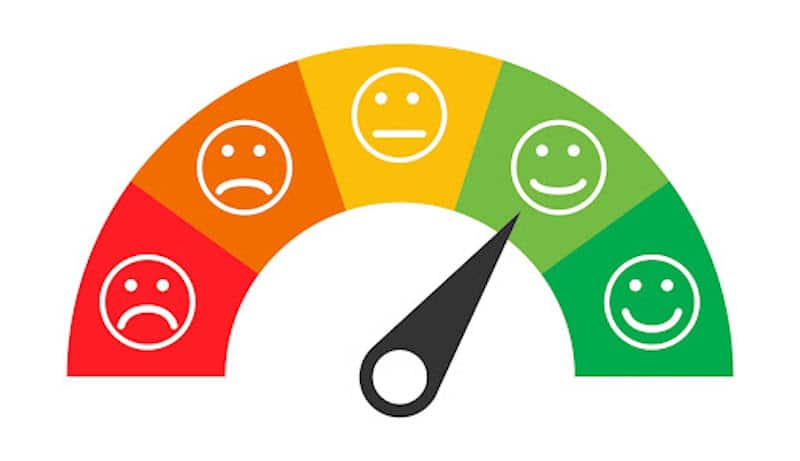Table of Contents
In the ever-evolving world of business, customer satisfaction is king. But how can you truly understand what your customers think and feel about your products or services? Enter customer satisfaction surveys – the invaluable tool that gives you a direct line to your customers’ minds and hearts.
In this article, we’ll explore the customer satisfaction survey best practices for creating, distributing, and analyzing these powerful surveys to boost customer experience, brand reputation, customer happiness, and ultimately, drive business growth.
Understanding the Importance of Customer Satisfaction Surveys
Customer satisfaction surveys are much more than just a collection of customer satisfaction surveys questions. They provide businesses with valuable customer satisfaction feedback, helping them enhance customer experience and strengthen their brand image.
These surveys consist of a set of questions designed to measure a customer’s expectations and satisfaction levels with a product, service, or business. By conducting customer satisfaction surveys, businesses can increase customer and client retention, foster customer loyalty, and encourage more people to invest in their brand. To get started, consider reviewing some customer satisfaction survey examples for inspiration.
When creating customer satisfaction surveys, it’s crucial to have a clear goal in mind and use survey design best practices. This includes:
- Employing a multichannel approach for distributing surveys
- Rewarding survey respondents
- Ensuring you gather comprehensive and accurate customer feedback
By working on these aspects, you’ll be able to measure customer satisfaction effectively and use the insights to improve your business. If you’re using a CRM like Mailchimp, try Survicate’s Mailchimp surveys.
Remember, satisfaction and customer experience surveys are your key to unlocking a treasure trove of information about your customers’ experiences and expectations. By understanding their needs and preferences, you can make data-driven decisions that will ultimately boost your brand’s reputation and success. Utilizing customer satisfaction data is essential for continuous improvement and growth.
Designing Effective Customer Satisfaction Surveys
The foundation of any successful customer satisfaction survey lies in its design. To create an effective survey, you should focus on three main aspects: choosing the right survey type, crafting clear and concise questions, and balancing quantitative and qualitative feedback.
By considering these elements, you’ll be able to gather comprehensive insights into your customers’ experiences and identify areas for improvement.
Choosing the Right Survey Type
Selecting the right survey type is crucial for aligning your survey with your business’s goals and objectives. There are several different types of customer satisfaction surveys, such as Net Promoter Score (NPS), Customer Satisfaction Score (CSAT), and Customer Effort Score (CES). Each type of survey has its advantages and focuses on different aspects of customer satisfaction.

NPS surveys measure customer satisfaction with a business’s offerings and gauge the likelihood of customers recommending the company to others. CSAT surveys, on the other hand, ask customers how satisfied they are with a particular aspect of the business, such as product quality or customer support. CES surveys measure the effort required for customers to interact with your support, purchase your product or services, or use what you’re offering.
By selecting the most suitable survey type, you’ll ensure that your survey aligns with your business objectives and provides you with relevant insights for improvement.
Crafting Clear and Concise Questions
Clear and concise questions are essential in obtaining accurate and useful feedback from respondents. Customer satisfaction surveys typically include multiple choice, rating scales, open-ended, and demographic customer satisfaction survey questions for measuring customer satisfaction. To avoid confusion and ensure that your survey participants understand the questions, it’s crucial to craft questions that are simple, unambiguous, and unbiased.
When creating survey questions, consider the following tips:
- Avoid double-barreled questions
- Use question branching to show only relevant follow-up questions based on the respondent’s answer
- Gather as much demographic data as possible from your customer database or CRM instead of asking for it in the survey
By following these tips, you can streamline the survey experience for your customers and help increase response rates.
Remember, the quality of your survey questions will directly impact the quality of the feedback you receive. By crafting clear and concise questions, you’ll ensure that your customers provide accurate and insightful feedback, ultimately leading to better decision-making and improvements in your business.
Balancing Quantitative and Qualitative Feedback
To gain a comprehensive understanding of your customers’ experiences, it’s essential to balance quantitative and qualitative feedback in your customer satisfaction survey. While quantitative feedback, such as ratings and multiple choice questions, provide measurable data points, qualitative feedback, such as open-ended questions, allows customers to express their opinions and experiences in their own words.
However, it’s important to avoid including too many open-ended questions, as this can lead to respondent fatigue and lower survey completion rates. By striking the right balance between quantitative and qualitative feedback, you’ll be able to gain a deeper understanding of your customers’ experiences, identify common pain points, and uncover areas for improvement.
Personalizing Surveys for Better Engagement
To increase survey engagement and response rates, personalizing your customer satisfaction survey is essential. This involves:
- Segmenting customers based on factors such as demographics, preferences, or purchase history
- Tailoring your survey to better resonate with each customer group
- Customizing the survey design, such as using your brand’s colors and logo, to increase brand recognition and make the survey experience more enjoyable for your customers.
Localization plays a significant role in personalizing customer surveys. By offering your survey in multiple languages and taking into account cultural differences, you can:
- Break down language barriers
- Make your survey more relevant and engaging for a diverse customer base
- Increase response rates
- Ensure that the feedback you receive is more comprehensive and representative of your entire customer base
Remember, a personalized survey is more likely to resonate with your customers and encourage them to participate. Here are some tips to create a more engaging survey experience.
- Segment your customers to tailor the survey to their specific needs and preferences.
- Customize your survey design to match your brand and make it visually appealing.
- Leverage localization to ensure that the survey is relevant and accessible to your target audience.
By following these survey best practices, you can increase response rates and gather better insights from your surveys.
Timing Your Customer Satisfaction Surveys
Timing is crucial when it comes to customer satisfaction surveys. Sending surveys at the right moments in the customer journey can significantly impact response rates and the accuracy of the feedback you receive. Ideally, surveys should be sent after a customer has made a purchase or after your customer service team has resolved an issue for them. This ensures that the customer’s experience is fresh in their mind, leading to more accurate and insightful feedback.

Additionally, research by various organizations, such as Mailchimp, CheckMarket, and Experian, suggests that there are optimal days and times of the week to send surveys to maximize the response rates. By considering these factors and adjusting your survey distribution strategy, you can increase the likelihood that your customers will engage with your survey and provide valuable feedback.
In summary, timing your customer satisfaction surveys appropriately ensures that you reach your customers at the right moments in their journey, which ultimately leads to higher response rates and more accurate feedback.
Analyzing and Acting on Customer Feedback
Once you’ve collected customer feedback through your satisfaction survey, it’s time to analyze the data and identify actionable insights. The process involves:
- Identifying patterns and trends
- Prioritizing actionable insights
- Closing the feedback loop to show customers that their opinions matter and that your business is dedicated to continuous improvement.
By breaking up the text into paragraphs, it becomes easier to read and understand. Each paragraph should be numbered.
Identifying Patterns and Trends
Identifying patterns and trends in survey responses is crucial for understanding common customer pain points and areas for improvement. By examining the feedback and looking for recurring themes, you can gain valuable insights into your customers’ needs and preferences.
One effective method to spot patterns and trends in survey responses is by tagging qualitative responses, such as those from open-ended questions or NPS surveys. This approach allows you to quickly identify common themes and issues raised by your customers, enabling you to address these concerns and improve your products or services.
Remember, recognizing patterns and trends in your customer feedback is the first step towards making data-driven decisions that will ultimately enhance your customer satisfaction and drive business growth.
Prioritizing Actionable Insights
With the data from your customer satisfaction survey in hand, it’s essential to prioritize actionable insights to focus on the most impactful changes that will improve customer satisfaction. To determine which insights to prioritize, consider the effect on customer satisfaction, the cost of implementation, and the potential return on investment.

Developing a strategy for putting actionable insights into practice and monitoring progress is crucial for ensuring that your business makes the necessary improvements. By focusing on the most important changes first, you can maximize the impact on customer satisfaction and drive positive results for your business.
Closing the Feedback Loop
Closing the feedback loop involves following up with customers, addressing their concerns, and demonstrating a commitment to continuous improvement. By taking the time to respond to customer feedback and address their concerns, you can build trust and foster customer loyalty.
Even if customers feel you cannot take immediate action on certain feedback, it’s important to acknowledge the customer’s input and let them know that their opinion is valued. This not only helps to strengthen your relationship with your customers, but also encourages them to continue providing valuable feedback in the future.
Remember, showing your customers that you genuinely care about their feedback and are committed to improving their experience is essential for building lasting relationships and fostering customer loyalty.
Avoiding Common Pitfalls in Satisfaction Surveys
To ensure that your customer satisfaction survey provides accurate and useful feedback, it’s crucial to avoid common pitfalls. These include using biased questions and creating overly long surveys. Biased questions can skew the results and lead to inaccurate feedback, while overly long surveys can cause survey fatigue and lower completion rates.
To avoid these pitfalls, focus on crafting clear, unbiased, and concise questions that accurately capture your customers’ experiences and opinions. Additionally, keep your survey length between 10 and 20 minutes to minimize survey fatigue and ensure that your customers remain engaged throughout the process.
By steering clear of these common mistakes, you can ensure that the feedback you receive through your customer satisfaction survey is both accurate and useful, helping you make informed decisions to improve your business.
Leveraging Technology for Better Surveys
In today’s digital age, technology plays a significant role in improving customer satisfaction surveys. By leveraging AI, survey tools, and analytics, you can:
- Create, distribute, and analyze surveys more efficiently and effectively
- Gather more comprehensive feedback
- Make data-driven decisions to enhance your customer experience
Some ways to use technology to improve customer satisfaction include:
- Incorporating live chat functionality
- Cobrowsing
- Providing a seamless mobile experience
- Using chatbots
- Utilizing analytics tools
- Leveraging social media platforms
Incorporate conversational chatbots, automated emails, and real-time online market research surveys to streamline customer satisfaction feedback and gather valuable insights efficiently.
By leveraging technology, you can create a more engaging and efficient survey experience for your customers, ultimately leading to higher response rates and better insights to drive your business growth.
Tips for Encouraging Survey Participation
Encouraging survey participation is vital for obtaining comprehensive and valuable feedback from your customers. Here are some tips to increase response rates.
- Offer incentives, such as discount codes, free shipping, or gift cards
- Keep the survey short and easy to complete
- Personalize the survey invitation
- Send reminders to non-responders
- Use a mobile-friendly survey platform
However, it’s important to ensure that these incentives do not lead to biased or random responses.
Another useful strategy for boosting survey participation is using progress bars in your survey. Progress bars create a sense of accomplishment and encourage respondents to complete the survey. Distributing surveys through multiple channels, such as email, social media, or your website, also increases the chances of reaching a wider audience and obtaining more feedback.
By employing these tips, you can encourage more satisfied customers to participate in your satisfaction survey, leading to higher response rates and more comprehensive feedback to improve your business.
Final Words
In conclusion, customer satisfaction surveys are an invaluable tool for understanding your customers’ needs, preferences, and experiences. By following best practices, such as choosing the right survey type, crafting clear questions, and balancing quantitative and qualitative feedback, you can gather comprehensive insights to drive improvements in your business.
Leveraging technology, personalizing surveys, and encouraging participation further enhances the survey experience and ensures that you receive accurate and useful feedback from your customers.
Remember, customer satisfaction surveys are your key to unlocking a treasure trove of information about your customers. By taking the time to design, distribute, and analyze these surveys effectively, you can make data-driven decisions that will boost customer satisfaction, strengthen your brand reputation, and ultimately drive business growth.
Frequently Asked Questions
What questions should I ask in a customer satisfaction survey?
Questions to ask in a customer satisfaction survey could include inquiries into the overall customer experience, specific feedback about products or services, and how customers think the company could better market its offerings.
How to do a good customer survey?
To conduct a good customer survey, choose the right survey type and limit the number of questions. Ask direct and easy-to-interpret questions that fulfill your end goal and make use of yes/no questions.
Ensure that surveys are short and the language used is conversational. Offer incentives to encourage responses.
What are the benefits of conducting customer satisfaction surveys?
Customer satisfaction surveys help businesses gain valuable feedback, improve customer experiences and ultimately strengthen their brand reputation.
By collecting customer feedback, businesses can identify areas of improvement and make changes to better serve their customers. This can lead to increased customer loyalty and a stronger brand reputation.
How can I choose the right survey type for my business?
Choose a survey type that best fits your business objectives, such as NPS, CSAT, or CES. Make sure you’re clear on what you want to achieve before selecting one.


